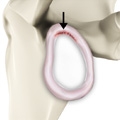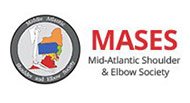The superior labral tear was first described in throwing athletes by Dr. James Andrews in 1985. In 1990, Dr. Stephen Snyder coined the term "SLAP" lesion (Superior Labrum, Anterior and Posterior) and the diagnosis and treatment of SLAP lesions from there has grown exponentially. Most people involved with sports, including coaches, players, and players’ families, have at least heard of the term or are very familiar with it.
When an overhead athlete has a shoulder injury, the first thing that everyone worries about is whether the athlete has a SLAP tear. While this can be a true, symptomatic injury in many athletes, it can also be overdiagnosed and/or over-treated.
The labrum is a rim of cartilage that surrounds the shoulder joint, and the superior labrum is the upper portion of the labrum which is the attachment for the biceps tendon. It can be torn in a traumatic fashion when the arm gets caught out to the side, or when the arm is jammed against the shoulder joint socket. It can also be injured as a result of repetitive wear-and-tear to the shoulder, as seen in the overhead athlete. The injured athlete will complain of pain in the front of the shoulder along the course of the biceps tendon or sometimes a pinching type sensation in the back part of the shoulder.
The person may also complain of popping or instability in the shoulder. The throwing athlete may report decreased speed with their pitches or the arm "feeling dead." The diagnosis of this injury is often not straightforward, as many other conditions can cause similar symptoms. There have been many physical examination tests described to diagnose a SLAP lesion; however, several studies have shown that each of the tests, by themselves, are not very specific and could be positive in someone without a SLAP tear. So, sports medicine physicians utilize combinations of these tests to help diagnose the problem.
An MRI is the most definitive, noninvasive measure to diagnose a SLAP tear. However, a sports medicine professional should be careful in interpreting the results of the MRI because, even though, a SLAP lesion is present, it may not be the cause of the pain. In fact, in an MRI study done on 21 professional baseball pitchers who did not have any shoulder problems, it was found that 10 of the players had SLAP tears and that there was no correlation between the presence of a SLAP tear and having to go on the disabled list at any point in the players’ careers. When making the diagnosis of a SLAP tear, it is important to correlate the findings on the MRI with the athlete’s history and physical examination.
A trial of non-operative management, particularly in the throwing athlete, is recommended first. Many athletes, including throwers, respond well to physical therapy, including strengthening and stretching exercises and evaluation of throwing mechanics. Another reason to avoid surgery as a first line treatment is that the return to throwing sports, in particular pitching, is low, with less than 50% of pitchers returning to play and only 7% returning to their previous level of play according to one study. So, only after a throwing athlete fails extensive non-operative management is surgery discussed. Overall, a SLAP lesion is often a difficult problem to diagnose and treat.
It is important to seek help from medical care providers who regularly treat athletes and have an understanding of the complexity of the problem.














